Pudelpointers are exceptional hunting dogs with a strong prey drive and wonderful temperament. This German breed needs to live in an active, outdoorsy household that hunts where he'll make a great family dog.
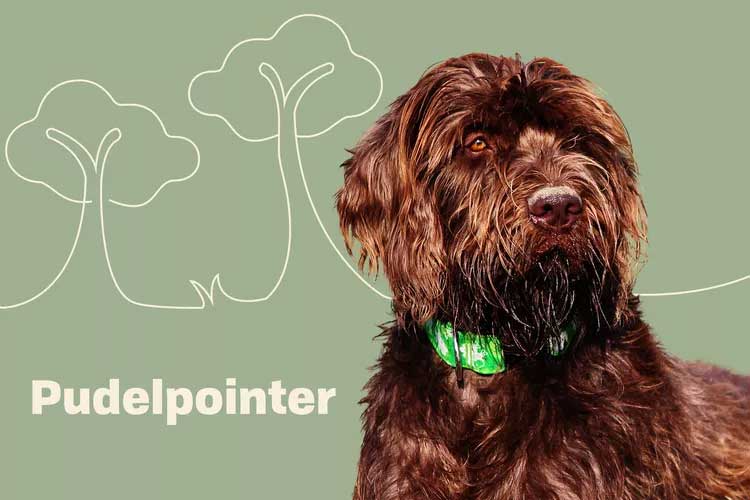
Pudelpointer Overview
| OFFICIAL NAME | Pudelpointer |
| COMMON NAME | Pudelpointer |
| PET HEIGHT | 22 to 26 inches |
| PET WEIGHT | 45 to 70 pounds |
| LIFESPAN | 13 to 15 years |
| GOOD WITH | children, dogs, families |
| TEMPERAMENT | gentle, outgoing, playful |
| INTELLIGENCE | high |
| SHEDDING AMOUNT | infrequent |
| EXERCISE NEEDS | high |
| ENERGY LEVEL | active |
| VOCAL LEVEL | when necessary |
| DROOL AMOUNT | low |
| BREED GROUP | none |
| BREED SIZE | medium (26-60 lbs.) |
| COAT LENGTH | medium, short, wiry |
| COLORS | black, brown / chocolate / liver |
| OTHER TRAITS | easy to train, good hiking companion, high prey drive, loves water, strong loyalty tendencies |
With an athletic build and a strong prey drive, the pudelpointer was bred to hunt. This German-bred dog is relatively rare in the United States, as pudelpointer puppies are predominantly placed in homes with active hunters. The breed brings a keen sense of smell, searching skills, a talent for retrieving, and pointing instinct to the field.
With his friendly attitude and extreme intelligence, it's easy to see the pudelpointer as an ideal family dog. While that is true, the pudelpointer will not thrive as just a companion—he constantly wants to work and hunt. Lisa McNamee, the former President of the Pudelpointer Club of North America and owner of LCM Kennels in Huntington Beach, Calif., has been breeding PCNA pudelpointers for over 30 years. She said the breed is well-protected by people who recognize that they are happiest when working as hunting dogs.
"The pudelpointer is a dog that, for many years in North America, has been kept very quiet," McNamee says. "They are great companions and great with kids, but it's important to keep in mind that, as a breeder, I am only allowed to sell to hunters. This is what they were born for. This is what they love."
Appearance
With an alert expression and ready-to-work attitude, the pudelpointer is happiest when he is hunting alongside his human. This friendly dog stands between 22–25 inches tall and can weigh between 45–70 pounds, with female pudelpointers a bit smaller than the males.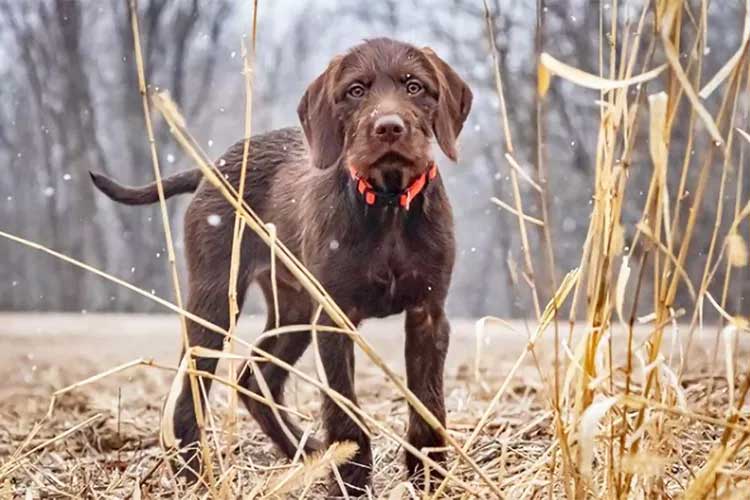
While the pudelpointer often appears a little scruffy at first glance, his double coat can be wiry, rough, or smooth, depending on the dog. Regardless of his coat type, the pudelpointer will always have deep brown or black fur with the occasional patch of white. His short-to-medium-sized ears hang down on either side of his face and match those of his ancestor, the English pointer. With deep brown eyes, the pudelpointer's gaze appears vigilant but calm.
If you spot your pudelpointer in an alert stance with his front paw lifted, that's a sign of his strong hunting instinct. When he spots potential prey, he grows still and lifts a paw in the direction of what caught his attention, a move called pointing. His keen nose will often lift slightly as he tries to keep the scent of his prey. This is completely normal behavior for this breed, but your pudelpointer should be well-trained so he does not take off without permission.
Temperament
The pudelpointer is active, adventurous, even-tempered, and he will get along wonderfully in an outdoorsy family of hunters. As long as he is well-socialized and trained from a young age, he will have no problems living in a home with children and other dogs. But because the pudelpointer has an exceptionally high prey drive, he might mistake other pets like cats, rabbits, or birds as something to chase after.
The pudelpointer is incredibly intelligent and trainable, especially when taught using positive reinforcement (think: rewarding him with treats and praise for desired behavior). His strong hunting instinct gives him a lot of enthusiasm for playing fetch, both on land and in water.
At the end of a long day outside, the pudelpointer will enjoy lounging in the house with his humans. He considers himself a key part of the family and will show affection to those he trusts, especially if that trust is built through consistent training and activities.
"We selectively breed for temperament, hunting ability, and conformation," McNamee says. "Temperament is super important, and anyone buying a pudelpointer needs to know they are buying an athlete. They're going to need to be exercised, and when you let them off lead, they are going to hunt."
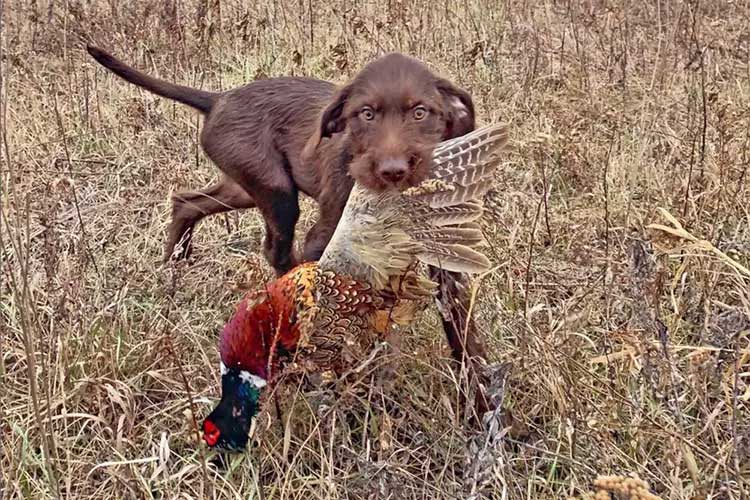
Living Needs
Given his desire to work, the pudelpointer is happiest in a rural environment with a large yard. He will not live well in a city apartment because he craves a large territory that offers a lot of activities and opportunities to hunt. And while the pudelpointer needs an active family, that doesn't mean you have to go on a hunting trip every weekend—frequent walks, swimming, and nature hikes with his family will tide him over until it's time to get back to the hunting field.Andy Hewett, the studbook keeper for the PCNA, says the pudelpointer thrives on human contact and should not be left alone for long periods of time. If bored and lonely, he'll develop undesirable behaviors.
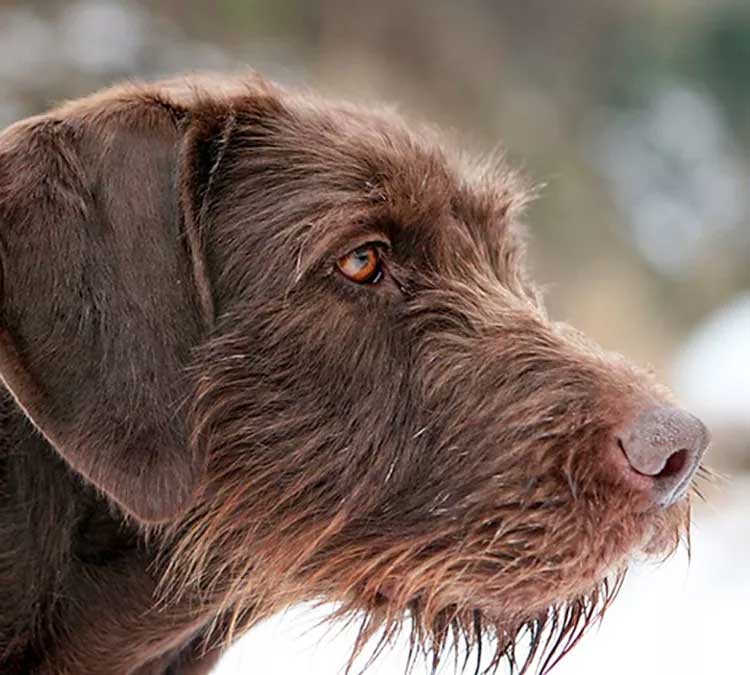
"He wouldn't be at his best as an outdoor dog in a kennel where he would never have any interaction with humans," Hewett says. "He is a nice family dog. But at the same time, he is a dog with a particular amount of drive. They like to work; it's what they love to do, and it's what they do well."
Care
With a body built for easily retrieving game on land and water, the pudelpointer is a low-maintenance dog when it comes to coat care. The pudelpointer's brown coat, no matter the length, sheds very little, likely a result of his German hunting poodle lineage. And while he's not considered to be a "hypoallergenic" dog, his lack of shedding means he might be a good fit for hunters who suffer from dog allergies.With a short outercoat and a longer undercoat, the pudelpointer's fur repels water with a quick shake. With a weekly combing session and an as-necessary bath, your pup will be kept looking his best. Owners may also want to consider brushing their dog's teeth regularly to keep his mouth healthy.
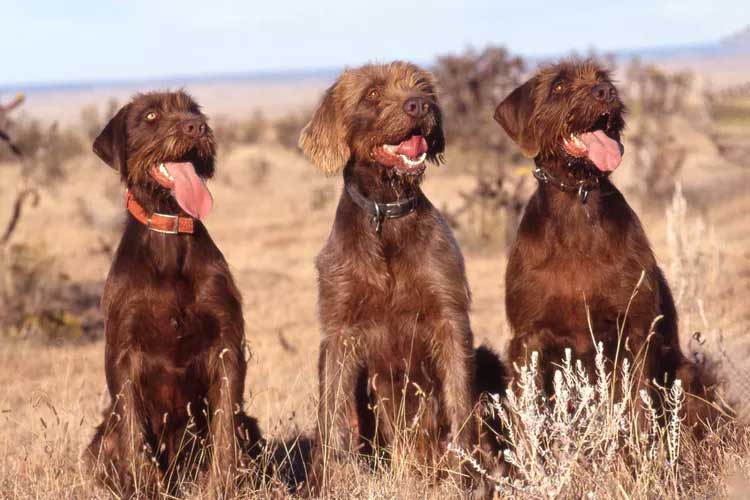
The pudelpointer is easily trained with positive reinforcement techniques. Hewett recommends that pudelpointer owners focus on teaching their dog basic cues in the beginning, such as teaching him to stand still on command and to come back when called.
"Those two things will get you a long way obedience-wise," Hewett says. "You just need to spend 15 minutes or more per day working on it, and you will have a dog that you can use and take anywhere. Just get the basics down, and you'll be good. Then, there are plenty of methodologies for specific training for retrieving work."
Health
The pudelpointer is a healthy breed that generally lives between 13–15 years.Mark Olcott, DVM and President of the North American Pudelpointer Alliance, says that while there are no chronic health issues with the pudelpointer, owners will want to ensure that the parent dogs' hips and elbows are checked for potential problems. Olcott recommends that all dog owners consider pet health insurance to account for unexpected vet visits and emergencies.
"Pet insurance is a good idea, just in general," Olcott says. "Certainly hunting dogs are out there and they're exposed to things you find in the wild. They could fall, scrape themselves, or get bitten by a snake. I'm a big fan of pet insurance, regardless of whether your pet has a job or not."
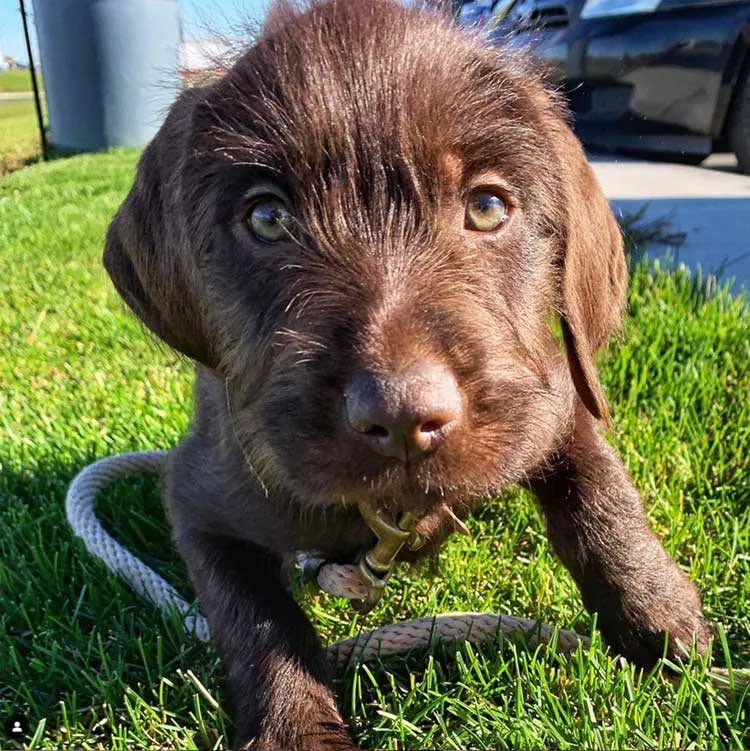
With a working dog like the pudelpointer, McNamee highly recommends that potential owners only work with reputable breeders that are endorsed by the Pudelpointer Club of North America. It's also important for potential owners to meet the parent dogs, learn their temperaments, and see verified health screenings for them.
"I would tell a potential buyer to be very careful where you buy your dog. Just because someone has a pup available doesn't mean that's good breeding. You need to carefully look at the pedigree," McNamee says. "The PCNA does not produce a ton of dogs, but the ones we do are bred for huntability, temperament, and confirmation."
History
As his blended name suggests, German breeders created the pudelpointer by mixing the German hunting poodle (or "pudel" as the Germans say) and the English pointer. The pudelpointer was bred in 1881 with the idea of creating a smart dog driven to hunt ambitiously. Rather than specializing in one type of hunting, the breed is renowned for his ability to work well on land and water.
The pudelpointer was brought to the United States in the 1950s by Sigbot "Bodo" Winterhelt, a German native who helped create the standard for hunting dogs. He was especially involved in showcasing the pudelpointer across North America as an eager-to-please hunting companion. The pudelpointer joined the American Kennel Club's Foundation Stock Service in 2016.
Today, the pudelpointer is recognized as a dog that can do everything when it comes to hunting. With over a century of breeding, he has gathered a tight-knit community of people who want to uphold the pudelpointer's hunting legacy and future.
"There are plenty of great dogs out there. If you're looking for a dog to go to the park and go hiking with you, there's probably better choices than a pudelpointer," Olcott says. "If you aren't a hunter, that's just not in the dog's best interest—or the person's best interest. If you're not hunting, it's a mismatch."
Fun Facts
The pudelpointer makes a "woo woo" greeting sound when they get really excited, similar to the Siberian husky and Alaskan malamute.While the pudelpointer is known for hunting a wide variety of live game, they also work in some states to track wounded big game animals.
The pudelpointer is known for sleeping with his legs straight up in the air, according to Olcott. "We call it the 'Pudelpointer Position,' which is sleeping with all or at least two legs straight up in the air," he says. "You may be wondering, how can that be comfortable? But it's a thing among pudelpointers."